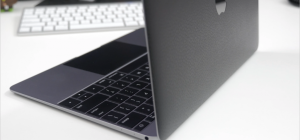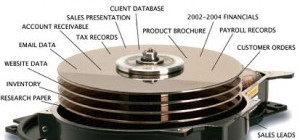 Some product repairs may involve replacing your computer’s hard drive, and some may not. If your hard drive contains sensitive or confidential data, read on for some suggestions on how to keep that data secure.
Some product repairs may involve replacing your computer’s hard drive, and some may not. If your hard drive contains sensitive or confidential data, read on for some suggestions on how to keep that data secure.
When your hard drive is replaced, the previous hard drive is returned to Apple and refurbished. As part of the refurbishment process, Apple erases and reformats all hard drives to help address any concerns about data security or identity theft.
You might send your computer for repair when the hard disk is still working—either the drive works intermittently or your hard drive isn’t the issue requiring repair. If you are concerned about data security and your hard disk is still functioning, you should back up your important data and use the secure erase functions in Disk Utility (described below) to reformat your drive before sending in your computer for repair.
Secure erase functions in Disk Utility
Your erase options depend on which version of OS X you have on your computer. Mac OS X v10.4 and later includes additional secure erase options in Disk Utility.
Note: With OS X Lion v10.7 or later and an SSD drive, Secure Erase and Erasing Free Space are not available in Disk Utility. These options are not needed for SSD because a standard erase makes it difficult to recover data from an SSD. For more security, consider turning on File Vault encryption when you start using an SSD. FileVault, available in Mac OS X v10.3 and later, prevents others from easily accessing any information contained within your Home folder, even if the drive unexpectedly stops working or is serviced.
Mac OS X v10.3.x and earlier include a Zero all Data function in Disk Utility that you can use to completely erase the drive. Always remember to make a backup of your important data before using any erase or encryption options, as any rewriting of data includes a risk of data loss.
Back up data
Back up all your data and files to an external hard drive. You can back up your files manually or you could use free backup software or you could create a System Image and save it to your external drive.
Shred deleted files
Once you have backed up all your files, pictures, and other data, then use software to completely shred or erase the data files permanently. Shredding refers to a technique where the space on the hard disk is written with some random characters so that the data underneath becomes unrecoverable. As discussed above, there is certain software that can help you do this. The more passes you use for shredding (or wiping as it is better known), the more secure you are against data theft.
Use Free File Wiper, SDelete, or any other tool to delete or wipe the data files completely. A simple Delete or Empty Recycle Bin won’t be of use. Formatting helps to a certain point. Since the mechanism used to store data on the hard disk is to create scratches representing one’s and zero’s, it is still possible for forensic software to recover disk images and thereby, your data.
Encrypt files
If you do not want to or cannot remove some sensitive files, use file encryption software to encrypt, lock and password-protect such data folders







